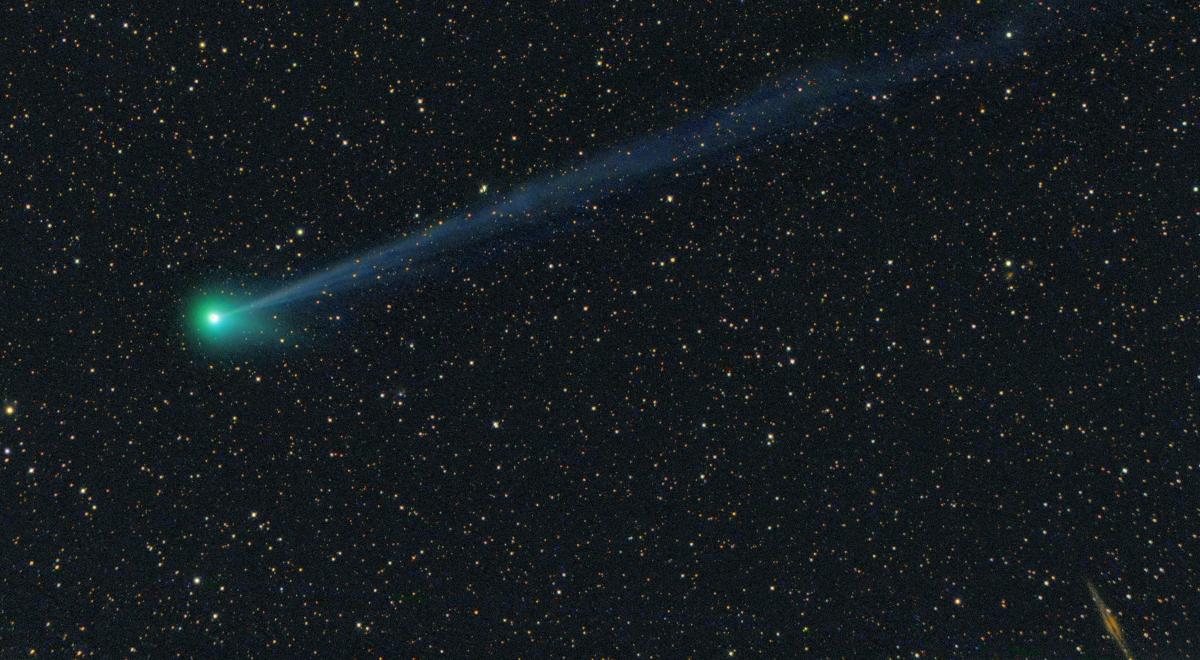Nocne Niebo: Kometa SWAN Już Widoczna!
Editor’s Note: The comet SWAN (C/2020 F8) is visible now! This article explores this exciting celestial event.
Why This Matters: Catching a Glimpse of Comet SWAN
The appearance of a bright comet is always a significant event for astronomy enthusiasts and casual stargazers alike. Comet SWAN, officially designated C/2020 F8 (SWAN), offers a rare opportunity to witness a celestial visitor with the naked eye (under dark skies) and possibly through binoculars or a telescope from more light-polluted areas. This article will delve into its current visibility, location, and what makes this comet so special. Understanding its trajectory and brightness helps predict optimal viewing times and locations across Poland. We'll also explore how to photograph it for stunning astrophotography.
Key Takeaways:
| Feature | Description |
|---|---|
| Visibility | Currently visible in the pre-dawn sky, potentially visible to the naked eye. |
| Location | Check stargazing apps for precise coordinates. It's moving across the sky! |
| Brightness | Brightness is variable; check updates for current magnitude. |
| Best Viewing | Dark skies, away from city lights, before sunrise. |
Nocne Niebo: Kometa SWAN - A Detailed Look
Introduction
Comet SWAN's sudden increase in brightness has captivated the astronomical community. Discovered by amateur astronomer Michael Mattiazzo using the Solar Wind ANisotropies (SWAN) instrument aboard the SOHO satellite, this comet offers a unique opportunity to witness a relatively bright comet in the night sky. Its visibility in the Northern Hemisphere makes it accessible to a broad range of observers.
Key Aspects of Comet SWAN
- Discovery: Discovered in March 2020 by Michael Mattiazzo using data from the SWAN instrument.
- Orbit: Comet SWAN follows a long, parabolic orbit, meaning it's a one-time visitor to our inner solar system.
- Composition: Like other comets, SWAN is composed of ice, dust, and gases. As it approaches the sun, these elements vaporize, creating its characteristic tail.
- Brightness: Its brightness is variable and dependent on its distance from the Sun. Check current astronomical resources for up-to-date magnitude information.
Detailed Analysis of Comet SWAN's Visibility
The comet's visibility depends on several factors, including its inherent brightness, atmospheric conditions, and light pollution. Currently, it is best viewed in the pre-dawn hours, before sunrise, from locations with minimal light pollution. Utilizing stargazing apps (like Stellarium or SkySafari) is crucial for pinpointing its precise location in the sky. Using binoculars or a telescope will greatly enhance the viewing experience, even in areas with some light pollution.
Interactive Element: Finding Comet SWAN
Introduction: Using Stargazing Apps
Navigating the night sky can be challenging. Fortunately, numerous apps provide real-time location information for celestial objects, including Comet SWAN.
Facets of Using Stargazing Apps:
- Real-time Tracking: Apps accurately show the comet's position at any given time.
- Augmented Reality: Some apps overlay celestial objects onto a live view of your sky, using your phone's camera.
- Ease of Use: Most apps are user-friendly, even for beginners.
- Additional Information: Many apps provide details about the comet's properties, orbit, and history.
Summary: Essential Tool for Observation
Stargazing apps are an indispensable tool for locating and observing Comet SWAN. They simplify the process, allowing even novice stargazers to enjoy this celestial event.
Interactive Element: Astrophotography of Comet SWAN
Introduction: Capturing the Comet's Beauty
Astrophotography of comets requires specific techniques and equipment. This section will cover basic approaches to capturing stunning images of Comet SWAN.
Further Analysis: Techniques for Astrophotography
- Tracking Mounts: Essential for long-exposure photography to compensate for Earth's rotation.
- Camera Settings: Proper ISO, aperture, and shutter speed settings are crucial.
- Image Stacking: Combining multiple exposures improves image quality and reduces noise.
- Software: Image processing software is necessary for post-processing.
Closing: Sharing Your Images
Share your astrophotography of Comet SWAN on social media using #CometSWAN and #NocneNiebo to connect with other enthusiasts!
People Also Ask (FAQ):
Q1: What is Comet SWAN?
A: Comet SWAN (C/2020 F8) is a newly discovered comet visible from Earth.
Q2: Why is Comet SWAN important?
A: It's a relatively bright comet visible to the naked eye (under dark skies) offering a rare opportunity for observation.
Q3: How can I see Comet SWAN?
A: Use a stargazing app to locate it in the pre-dawn sky. Dark skies are best. Binoculars or a telescope will enhance viewing.
Q4: What are the challenges in observing Comet SWAN?
A: Light pollution, cloud cover, and its relatively low altitude in the sky can make it difficult to see.
Q5: How can I photograph Comet SWAN?
A: Use a camera on a tracking mount with appropriate settings for astrophotography.
Practical Tips for Observing Comet SWAN:
- Check the weather forecast: Clear skies are essential.
- Find a dark location: Away from city lights for optimal viewing.
- Use a stargazing app: For precise location information.
- Bring binoculars or a telescope: For a better view.
- Be patient: It may take time to locate the comet.
- Dress warmly: Nights can get cold.
- Bring a red light flashlight: To preserve your night vision.
- Share your experience: Post your sightings and photos on social media!
Summary: Comet SWAN provides a unique opportunity to observe a celestial wonder. With the right tools and information, anyone can witness this spectacular event.
Closing Message: Go out and explore the night sky! This fleeting celestial visitor won't be around forever. Remember to share your experience and images!
Call to Action: Share this article with fellow astronomy enthusiasts! Subscribe to our newsletter for more updates on upcoming celestial events.
(Hreflang tags would be included here, depending on the target languages. For example, <link rel="alternate" hreflang="pl" href="..." /> for a Polish version.)

